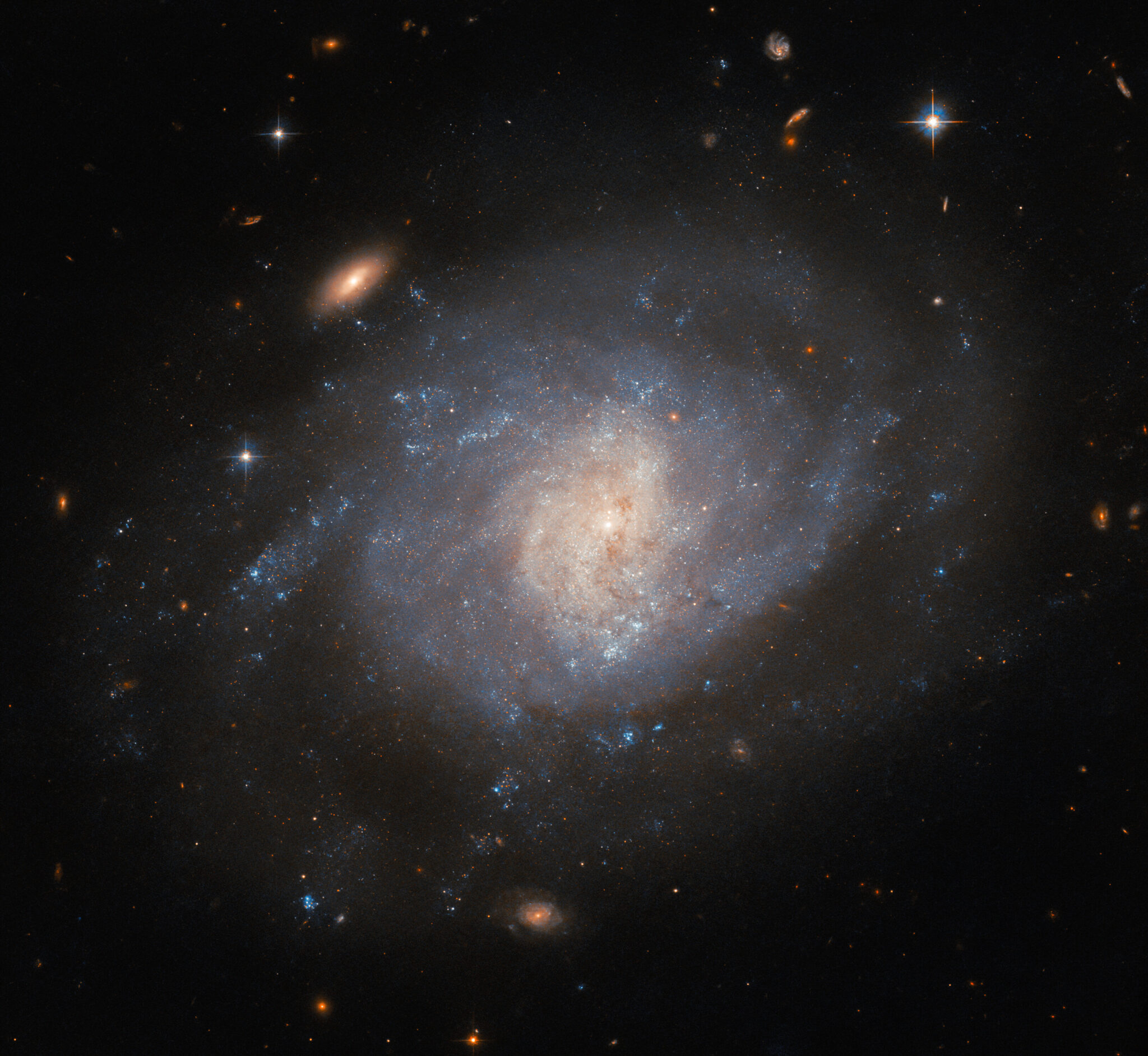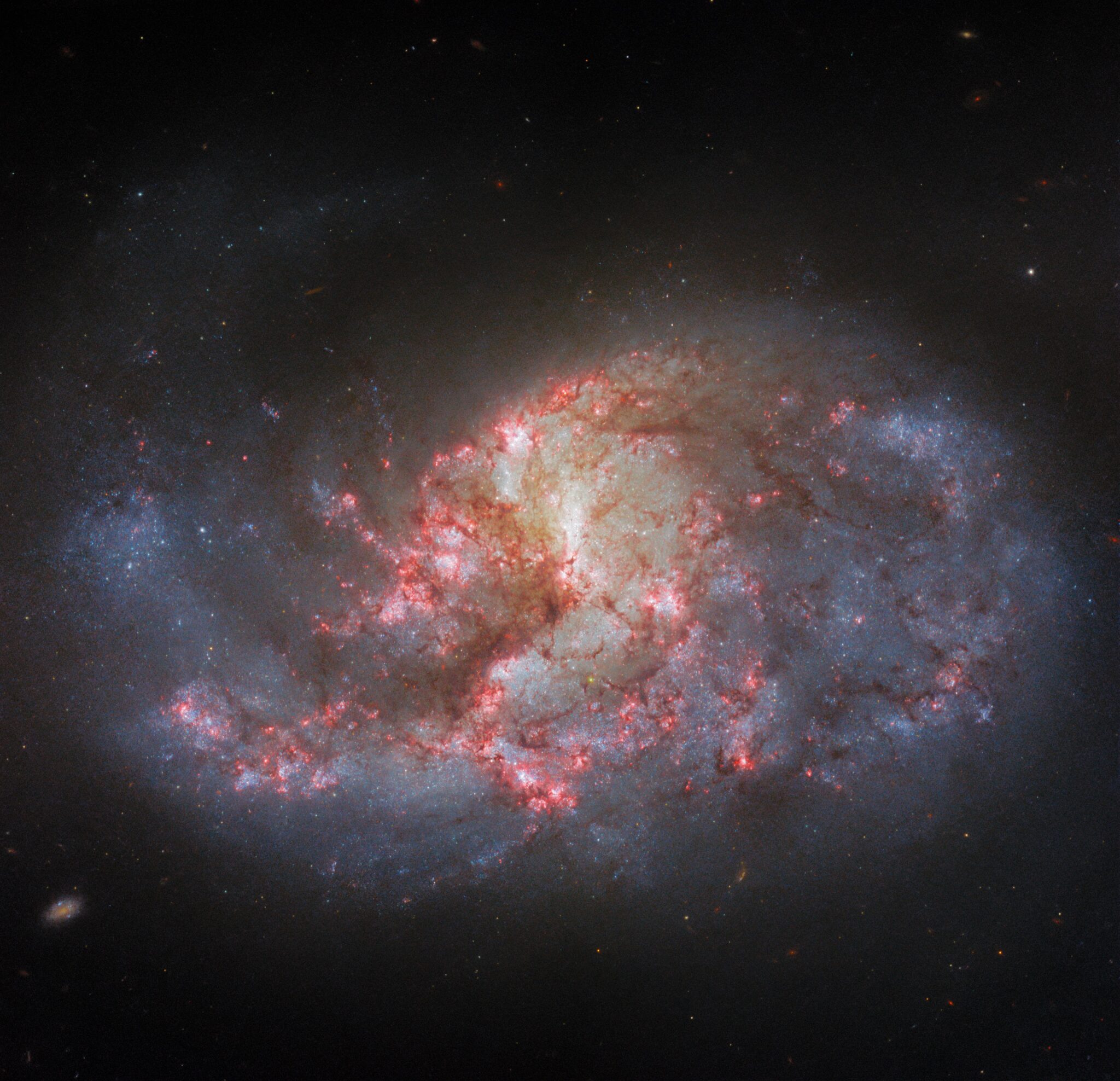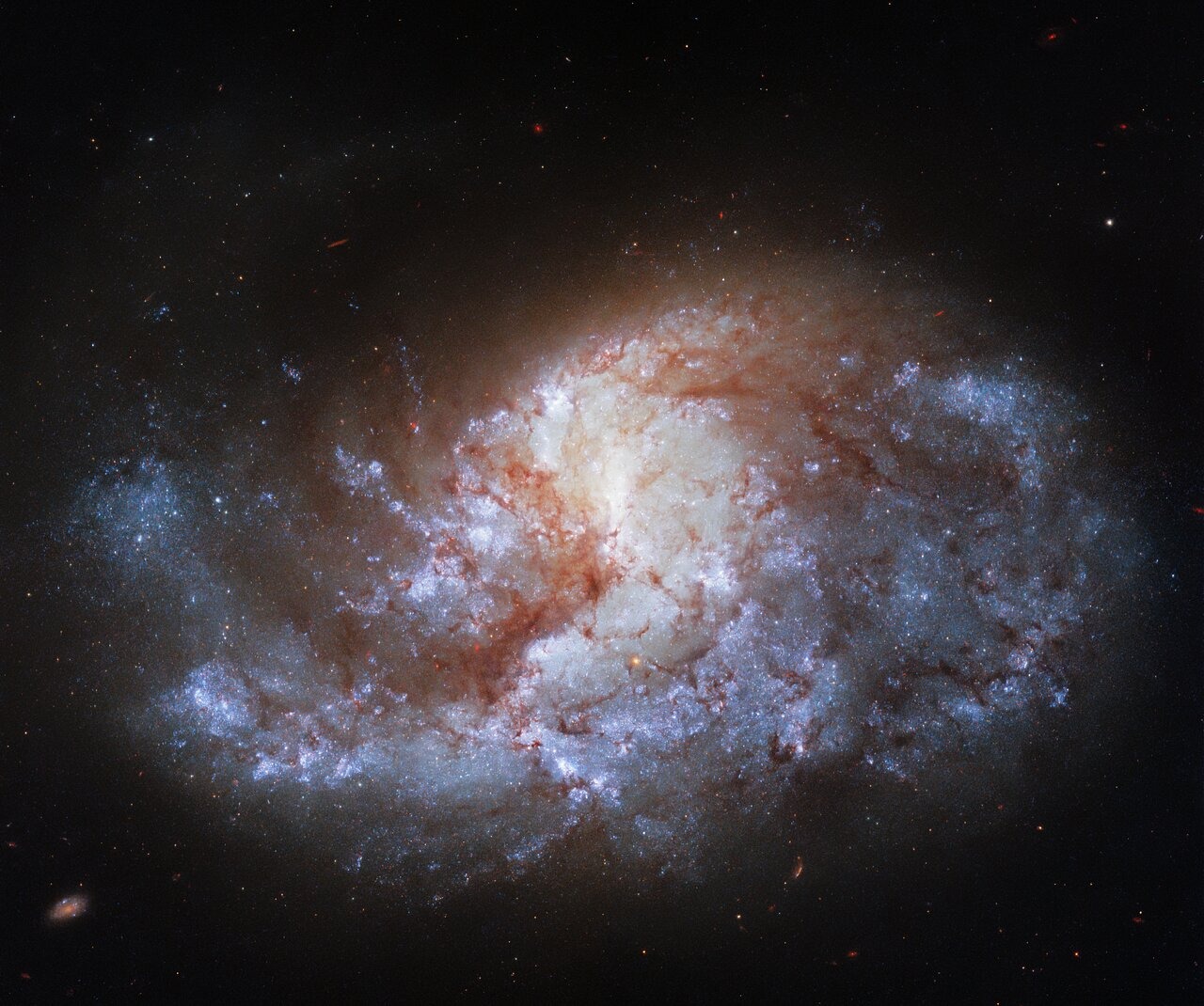The Hubble Space Telescope continues to amaze with its images of deep space. Recently, the European Space Agency (ESA) published several new photos of galaxies. They have become a real paradise for the eyes.

The first of them is the galaxy NGC 941 with a diameter of about 55 thousand light-years. It is located at a distance of approximately 55 million light-years from the Milky Way. Its discoverer is William Herschel. He noticed it in 1785. Of course, astronomers have seen a faint hazy spot in their telescopes for a long time, but Hubble shows us incredible details of this system.
In recent images, you can notice something besides NGC 941 — the supernova SN 2005ad. This stellar explosion is special in part because it was noticed not by a professional astronomer, but by an outstanding amateur Koichi Itagaki. SN 2005ad belongs to Type II. It was the reason that Hubble turned its gaze back to the distant galaxy.
NASA notes that amateur astronomers can sometimes discover such events earlier than professionals armed with the most modern equipment. The fact is that supernova flares occur very quickly, so to detect them, you need not only excellent equipment and skills, but also luck. Considering that Itagaki already has about 200 supernovae found on his account, it is clear that in addition to his experience, he is also very lucky.

Another image captured the galaxy NGC 1385. It is located at a distance of about 30 million light-years from us and is a frequent object of Hubble observations. In 2021, its photo even received the title “Hubble Picture of the Week”. Of course, there was no magic of filters here. They help to “tint” the cosmic images, in their raw form, looking just like greyscale. Filters also help to see various details, since many cosmological events are easier to study in different ranges of electromagnetic waves. In the case of NGC 1385, the replacement of the filter led to the fact that the galaxy generally began to look different.

As usual, the Hubble Telescope’s magical images also have a scientific purpose. In this case, NGC 1385 was photographed as part of the Physics at High Angular Resolution in Nearby GalaxieS (PHANGS) mission. The goal of this mission is to create the first set of astronomical data mapping the connections between young stars and cold molecular gas in various galactic environments.
Earlier we reported on how Hubble captured the spiral galaxy NGC 2814.
According to petapixel.com
Follow us on Twitter to get the most interesting space news in time
https://twitter.com/ust_magazine


